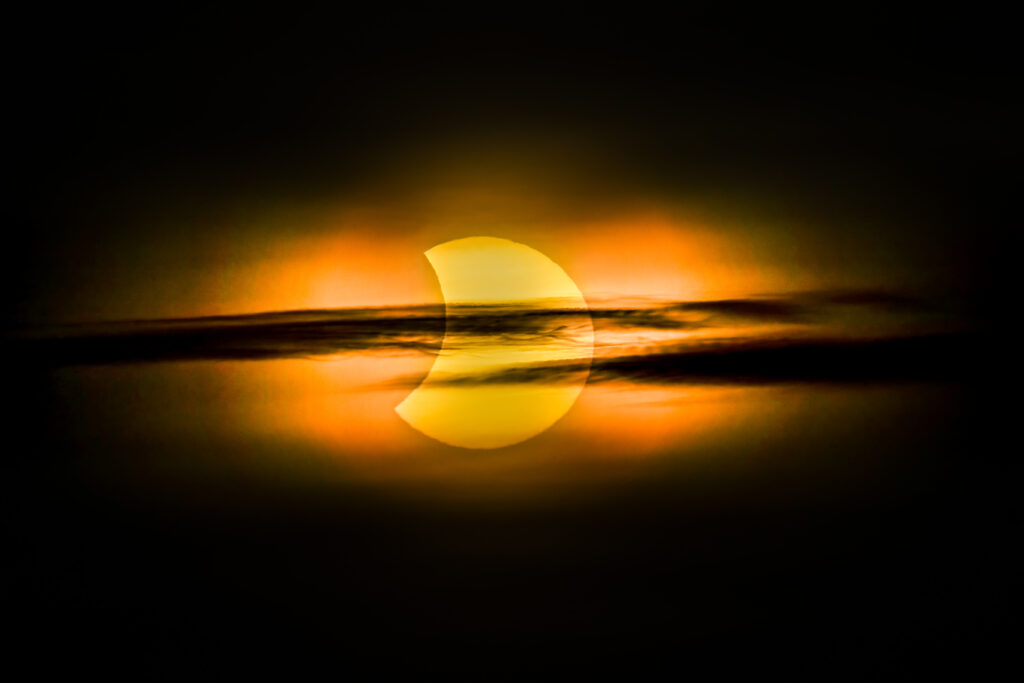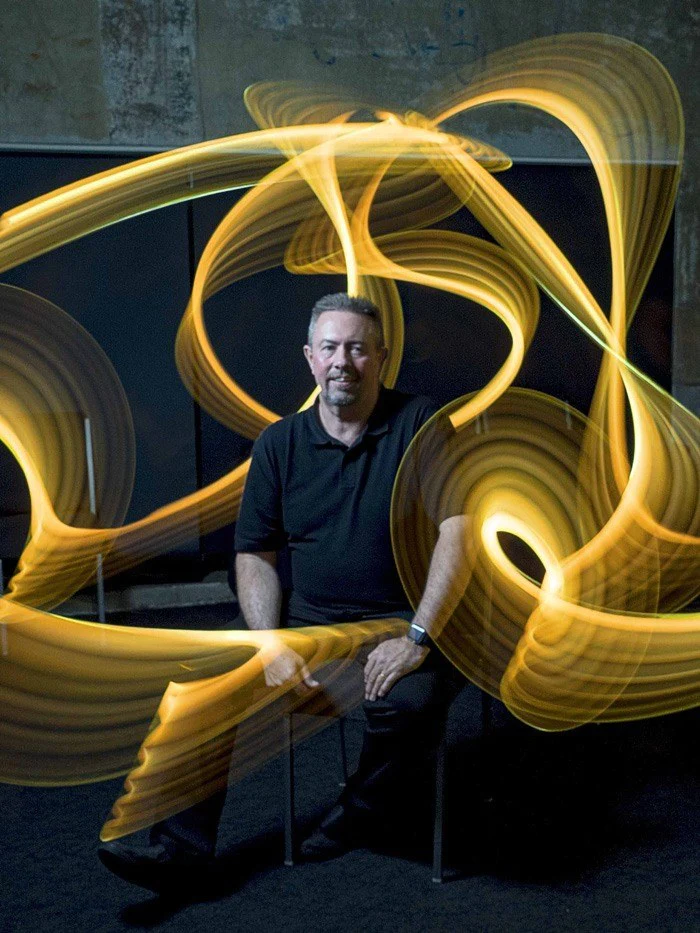This Stock of Soviet Cameras are Proper Vintage
Dobryy den comrades. Today we are going on a trip down the Ulitsa of nostalgia.
We are returning to a time of missile treaties, iron curtains and red flags. Today we are going to look at some of the best Soviet cameras for creative photography.
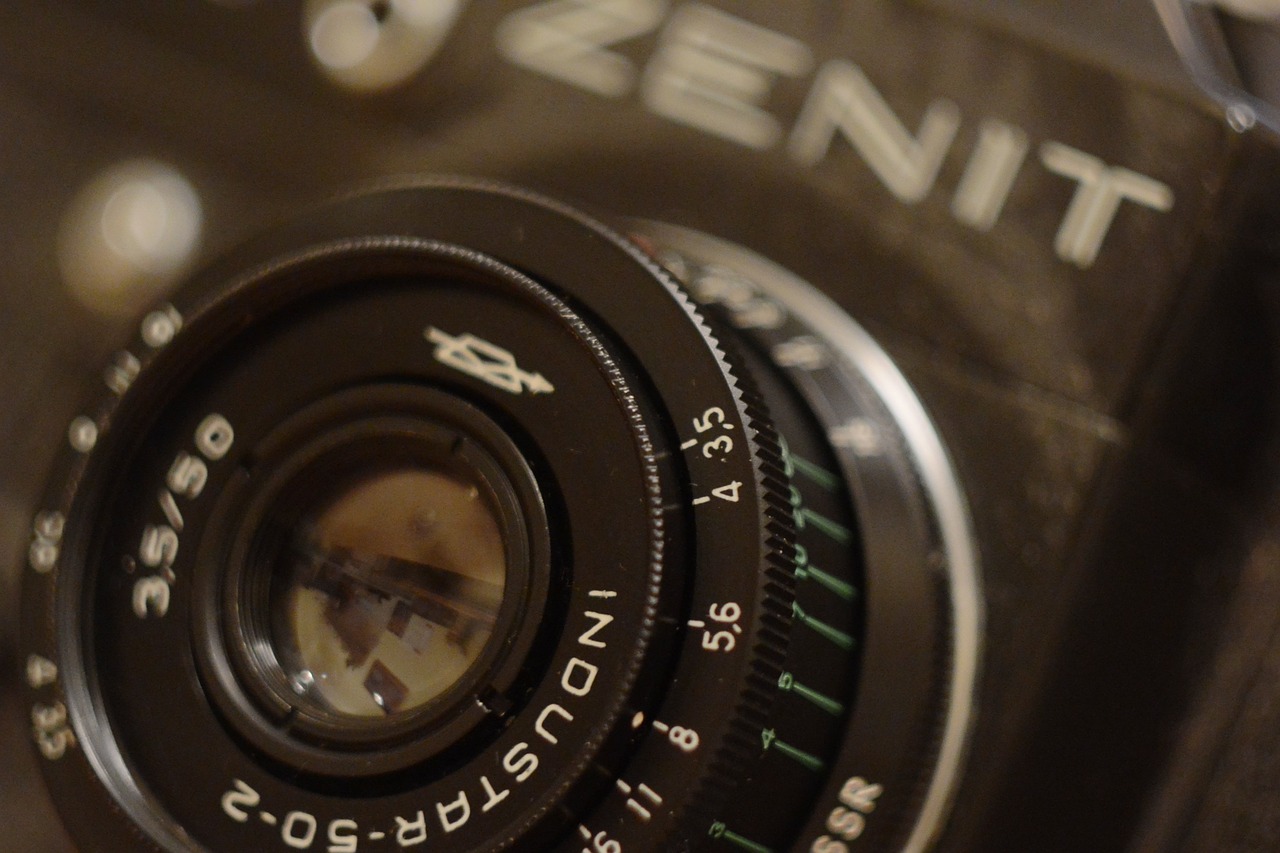
The beauty of buying a Soviet camera in this day and age is that they are cheap, sturdy and fun. Often built out of the same materials as Soviet tanks, they were not sophisticated machines, they were utilitarian workhorses for the masses.
That makes them great tools for really understanding the mechanics of photography.
1. Zenit
We will start where I started several eons ago. I was bought one for my 16th birthday and fell in love with it. I had no idea what all the buttons, knobs and dials did, but it looked good. My passion for photography was born into the world.
The Zenit 11 was a very basic SLR camera. It came with surprisingly sharp Helios 58mm lens and a selenium cell light meter which meant it required no batteries. It was also entirely manual had a ludicrously slow flash sync speed and a top shutter speed of 1/500th of a second.
The beauty with this lack of features is that it requires you to think creatively to get the shot. Too much light? Do I stop down further or use ND filters? Is the metering correct or shall I bracket?
If you are looking for one of the cheapest options to get into creative SLR film photography the Zenit is well worth a look.
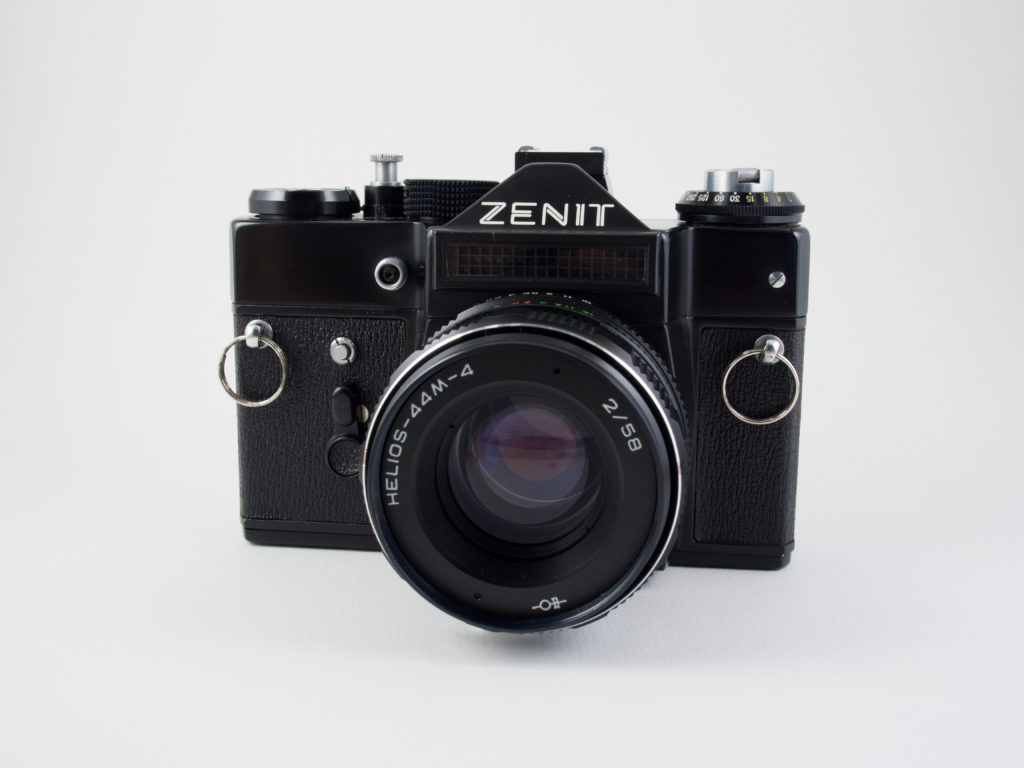
A Soviet Tank, The Zenit 11.
2. Horizon
These days, to take a panoramic we simple raise our iPhones and pan around. Where’s the fun in that? Why not take panoramic images on 35mm film?
The Horizon is a Soviet/Russian camera that has been in and out of production since 1948. Rather than you having to swivel your iPhone, the Horizon swivels its entire lens.
The end result is a 120-degree panorama exposed to a 24 x 58 mm frame. Now come on, you've got to admit – that's pretty cool.
The Horizon makes you think entirely out of the 3:2 box. You will probably have to get creative in finding ways to print your films too…
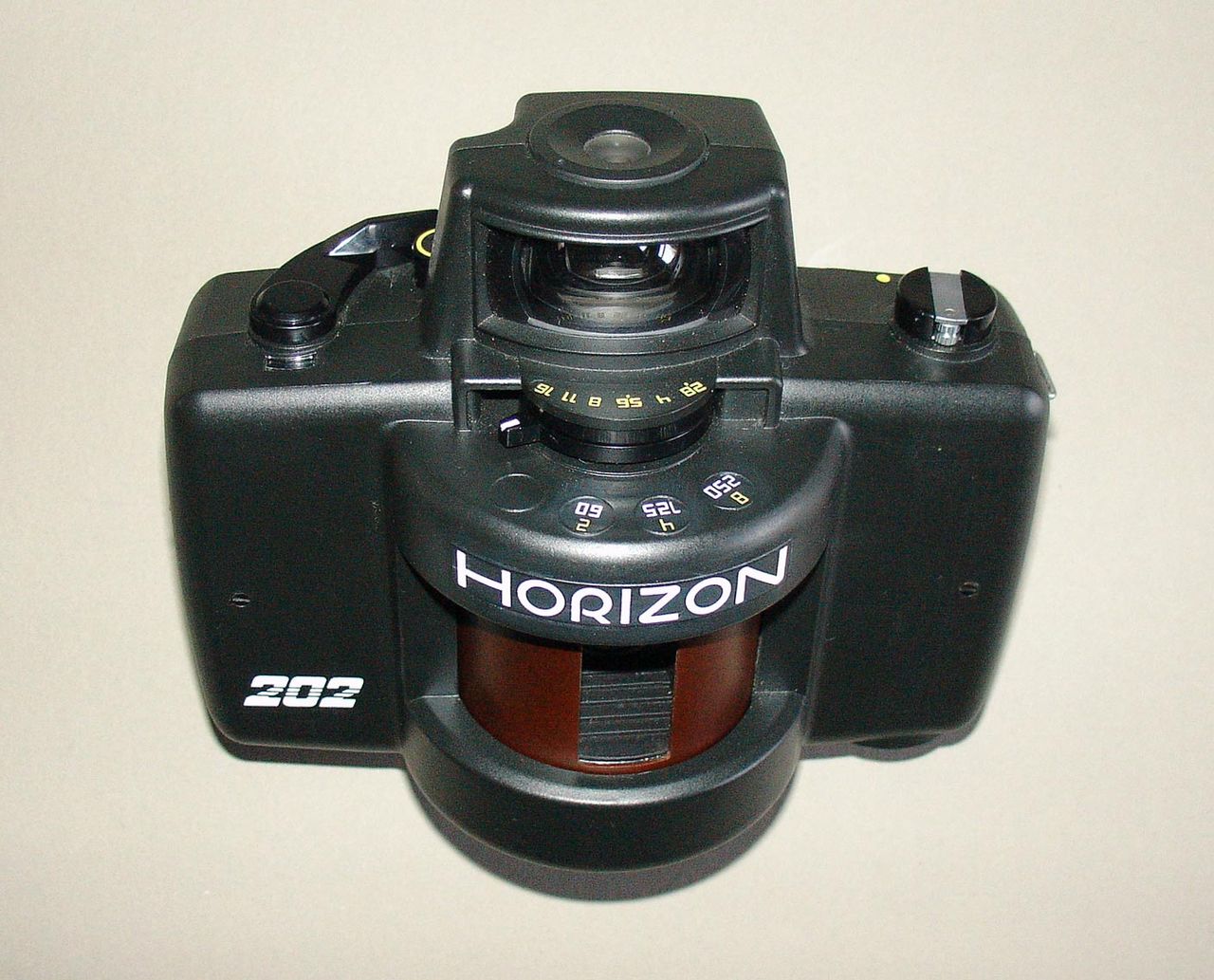
3. Kiev
The Kiev 88 is regarded as the “Ukrainian Hasselblad.” Who would not want a Hasselblad?
Even today good “Blads” fetch a premium price, the lenses even more so. The cheap route is the Kiev 88, effectively a Hasselblad clone or Hasselbladski as it is sometimes known.
Reliability is notoriously Soviet on these cameras, some were reasonably well made, others put together by someone who had perhaps over indulged on vodka the night before.
It's worth buying a Kiev “in person” to check its functionality. If you can find a good one, you have opened a budget door to the creative wonders of medium format film photography.
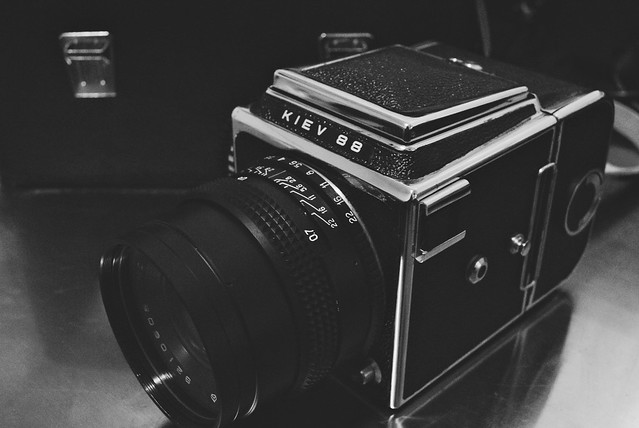
The Hasselbladski.
4. Zorki
If the Kiev 88 is the cheap route to a Hasselblad, then the Zorki 4 is the cheap route to a Leica. Or rather a Leica lookalike. It is a true back to basics rangefinder camera.
Entirely manual with no exposure meter it will challenge you to take creative pictures. Most Zorkis came with a Jupiter 8 50mm f2.0 lens but they can also accept Leica lenses.
The viewfinder is a typical coupled rangefinder fare but limited in its view to 50mm lenses. Anything other than a 50mm is going to require some guesswork. Even in excellent condition, Zorkis can be found very cheaply making them a great route into rangefinder film photography.
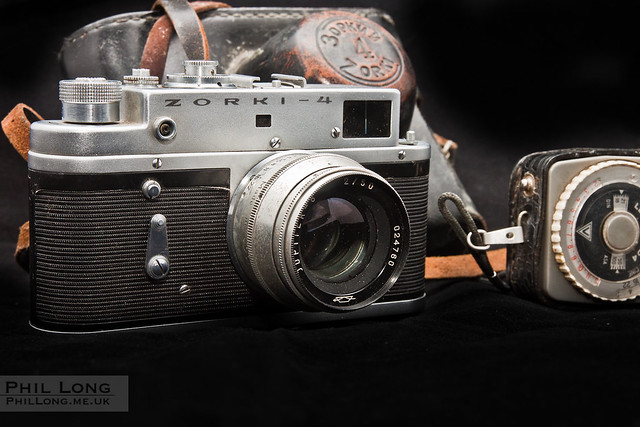
In some ways like a Leica. In others, not.
5. Lomo
Any look at Soviet cameras for creative photography could not be complete without Lomo. For a few years in the digital era, Lomography was a massive trend rivalling HDR. Even today there is a entire sub genre of photography devoted to the Lomo camera.
Lomography is built around the Lomo LC-A. Designed in 1984 it was a fixed lens 35mm compact camera and has subsequently been reproduced in a number of variations.
The key to Lomography is getting creative with poor image quality. The fixed lens is notoriously bad, being both blurry and with color fringing.
Lomo enthusiasts use these imperfections to get creative with their photography. With a fixed lens and only autoexposure it will challenge you to think out of the box to get interesting shots.
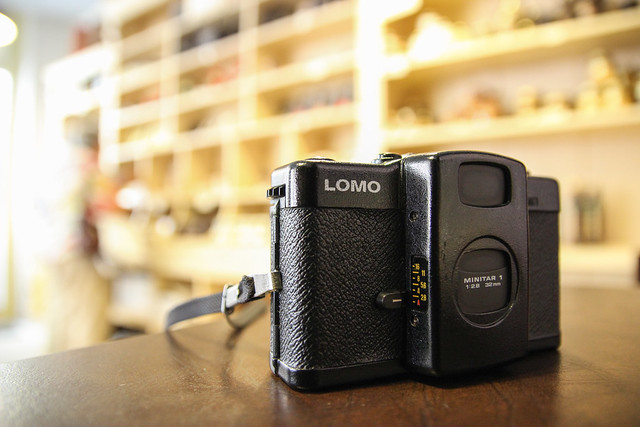
On no it's a Lomo.
Summary
So there we have it. Five relatively cheap soviet cameras for creative photography – there's definitely something in there to splash your hard earned Roubles on.
None of them are perfect, far from it. All of them, however, will challenge you to think creatively and to embrace the inherent defects, and that in itself is just fun.
Further Resources
Further Learning
Learn the fundamentals of Lightroom editing and make your images really work for YOU by getting the best out of them.
We recommend this fantastic course by the guys at Photography Concentrate – Super Photo Editing Skills.

